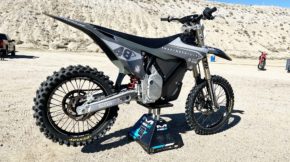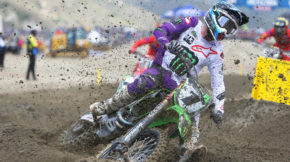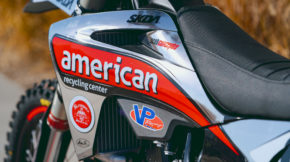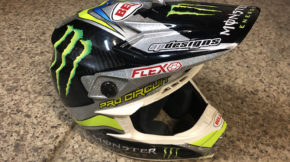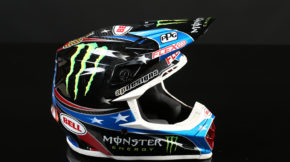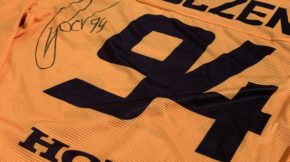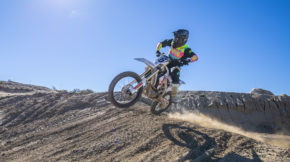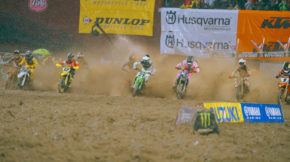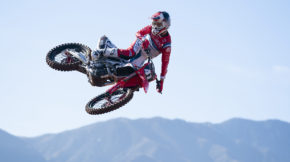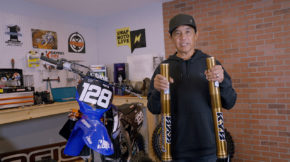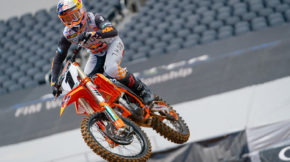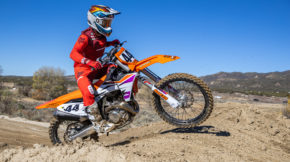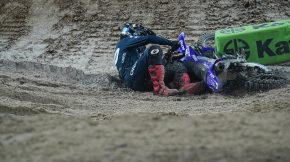Fox Racing Friday | When Ricky Carmichael Changed Motocross
Share

INSTAGRAM | @rickycarmichael
INSTAGRAM | @foxmoto
ARCHIVE IMAGES | Fox Racing
The day after the 2001 Las Vegas Supercross, while most of the competition stumbled back to their rooms in a haze from the prior night’s partying, Ricky Carmichael went to the gym at the Hard Rock Hotel. Although Carmichael had just taken away the 250 Supercross title in dominant fashion with 13 consecutive Main Event victories, a record that matched Jeremy McGrath’s, his decision to work out in front of everyone clearly showed his determination and effectively ended the party lifestyle of the era. Like many, I’ve often wondered if the early morning session was part of some Machiavellian scheme to shatter the confidence of the competition and reaffirm his dominance. So it was the first thing I asked him when we talked at the Monster Energy Cup.
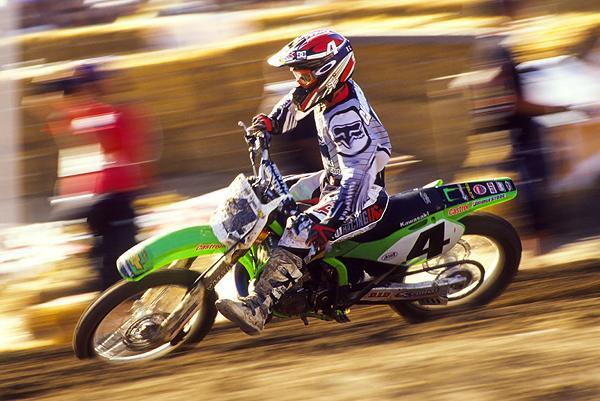
“I wasn’t trying to ruin anyone mentally. That was just my routine and I trained seven days a week,” he recalled while we stood on the floor of Sam Boyd Stadium. “If I did it in the hotel gym or went out on a run, somebody was going to see me. That recovery spin was key to what I needed to do the following week, so I didn’t have a choice.” With numerous 125cc wins and back-to-back 250 National championships in 1999 and 2000 to his credit, Carmichael was widely expected to add another number one plate to his mantle that coming summer, which started a short time later at Glen Helen Raceway in Southern California. And he considered that status as the rider to beat much more important than any sort of mental tactic. “I never tried to psych anyone out like that. I tried to let my results do that [Laughs]. If I knew that I could be faster than them every time I was on the track, that was going to do the job. They didn’t need to see me training to do that. I was more worried about myself, how I could be better, and what would make me mentally stronger rather than go on the offense and mess with them.”
It’s been nearly two decades since that early May morning, but the impact it had on the sport is impossible to miss, as riders spend countless hours working on their training programs and leave little to chance with their diet and planning. Did Carmichael anticipate such a shift? “I didn’t think that I would change that much about the sport or how serious everyone took it,” he noted. “Not to say that the guys before me didn’t work hard, because they did, but the intensity was a lot different. It became eat, sleep, breathe moto.
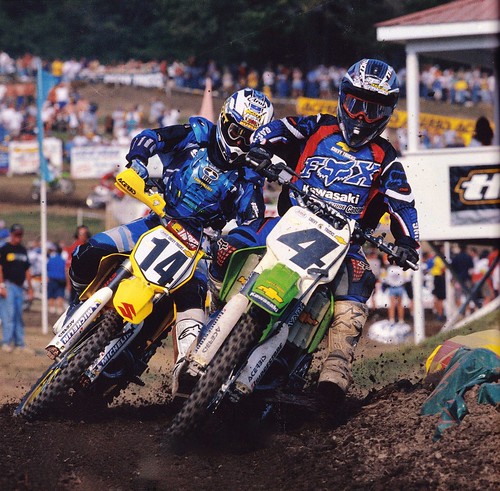
“I had to do it to beat the King (Jeremy McGrath),” he explained of his motivation for the rigorous program. “That’s what it took for me, but I don’t think that the way I burned the flame is what’s good for everybody else. However, I think I brought an element of straight-up legitimacy and these guys have to treat it like a job. Everything is buttoned-down a little bit more and it’s been the same ever since, which is cool to see.”
Aldon Baker was essentially introduced to the sport by being a part of Carmichael’s camp at that time, and in the years since he’s applied a similar routine to accomplished riders like James Stewart, Ryan Villopoto, Ken Roczen Ryan Dungey, Marvin Musquin, Jason Anderson, and Cooper Webb. The intensity and accountability haven’t worked for everyone and were clearly noted as a reason for Villopoto’s early retirement, but Carmichael managed to stay in the routine all the way to his retirement in 2007. How did Carmichael to make it through without much resistance? Because he knew no different. “I always rode a lot, ever since I was a little kid because that’s how I was raised. Compared to some of my main competitors, they had a lot more raw talent, so I had to work a little more to make up for the deficit in raw talent that I had,” he explained. “That was the only thing that I knew. I was able to burn that flame for a long time because it was normal, what I was accustomed to. Maybe some of the guys don’t have that longevity because they weren’t used to that kind of workload. I grew up like that, riding that much since I was on 60s. I didn’t know anything different.”
Looking back years later, one can see two sides to Carmichael’s demeanor at that time. When the full field was on the track, RC was aggressive, daring, and determined to win by almost any means necessary. But some of the most iconic photos, videos, and advertisements were created by those that were in Carmichael’s orbit, especially at the Farm in Florida. Need proof? Search YouTube his part in Terrafirma 7, when he allowed cameras to be mounted to the front and back of his bike during high-speed laps, or for footage of his appearances on mainstream television like The Tonight Show With Jay Leno and MTV’s Cribs. That he wasn’t more lighthearted is something he acknowledges now as one of the few regrets of an illustrious career. “Looking back, I wish I would have been more colorful. I was just so hardcore and I let my results do the talking and make the money, and on the opposite end of the spectrum was someone like Pastrana. I think there is a balance between what I was doing and what a guy like Pastrana was doing,” he said. “I can’t turn back the clock, but if I could do it over, I would be more open to media interviews. Because at the end of the day, it really doesn’t hurt.”
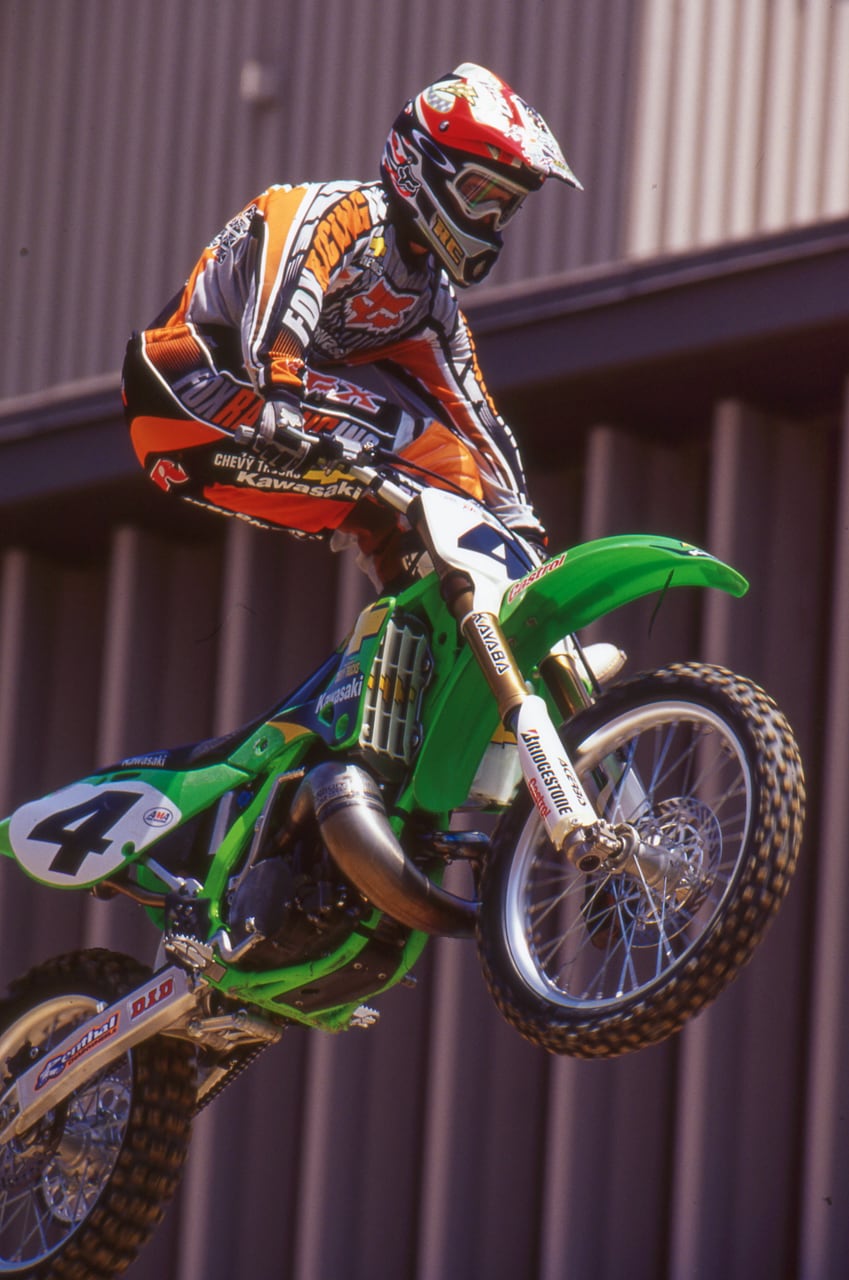
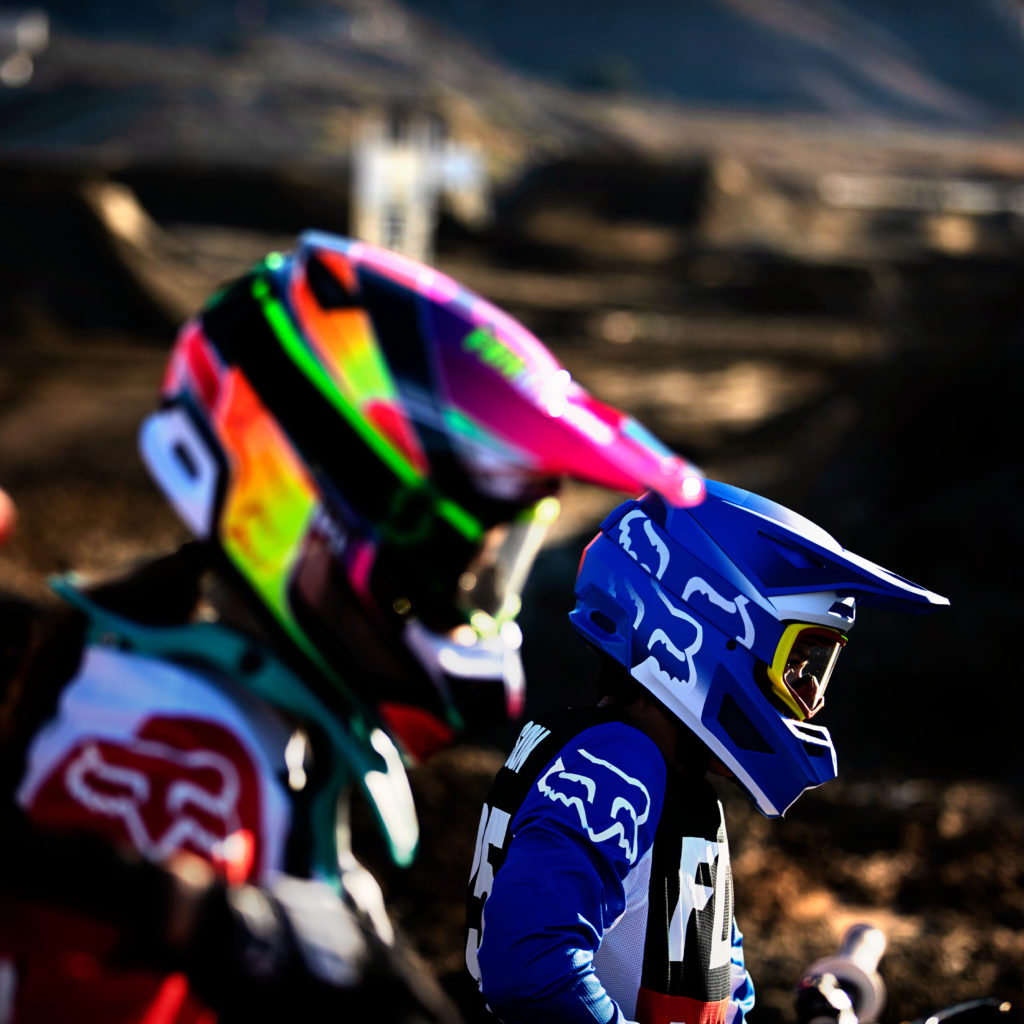
Fox Racing V1, V2, and V3 Helmets: A Helmet For Everyone
Through the years, Fox Racing has developed and refined its motocross helmet offerings greatly and today, the three offerings – V1, V2, and V3 – are among the best-looking helmets available at any price. All three are characterized by the same basic shell shape that is more aggressive-looking than anything ever offered by Fox before, as well as the unique MVRS magnetic visor retention system. Furthermore, each helmet in the Fox lineup is made in four different shell sizes, which ensures the best and safest fit. We’ve ridden and/or raced in all three offerings from Fox, and thought we could offer some insight as to the features, fit, and comfort of each of them. Read on!
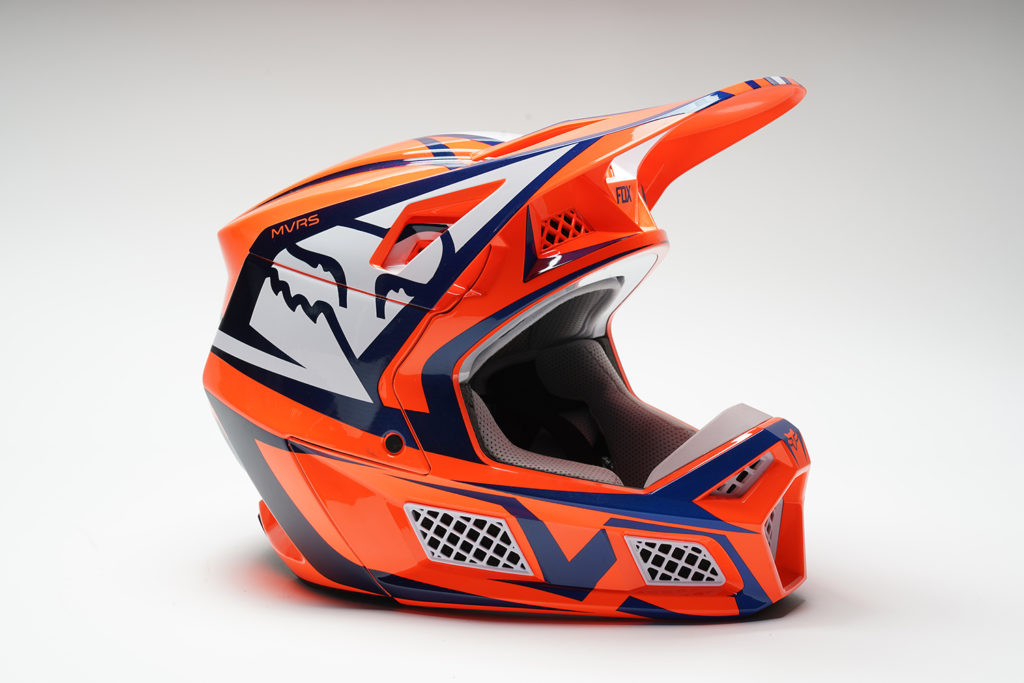
Fox Racing V3
Price: Starting at $499.99
The flagship helmet, the V3 is the most technologically advanced helmet ever offered by Fox Racing. Jam-packed with safety features, the V3 is characterized by a lightweight carbon-composite shell, a dual-density Varizorb liner that is designed to better disperse impact energy, and the Fluid Inside rotational impact protection system, which utilizes seven fluid-filled pads between the EPS and comfort liner to provide rotational impact dampening. Perhaps the most unique construction feature of the V3 is the patent-pending chin bar/eye port CAGE. Look closely, and you’ll see that the V3 shell is actually made up of two pieces; the carbon composite main helmet and a composite eye-port and chin bar piece is securely mounted to the helmet’s main shell and is designed to offer better impact dispersion than a one-piece shell.
As we’ve said multiple times previously, we’ve tested the new V3 extensively. A big crash that sent us headfirst into the ground resulted in severe damage to our V3 in the forehead area of the helmet, but we emerged largely unscathed from the impact. The MVRS visor detached in the impact and dirt was wedged in between the main shell and CAGE, and the inner EPS liner was compressed. The helmet did its job.
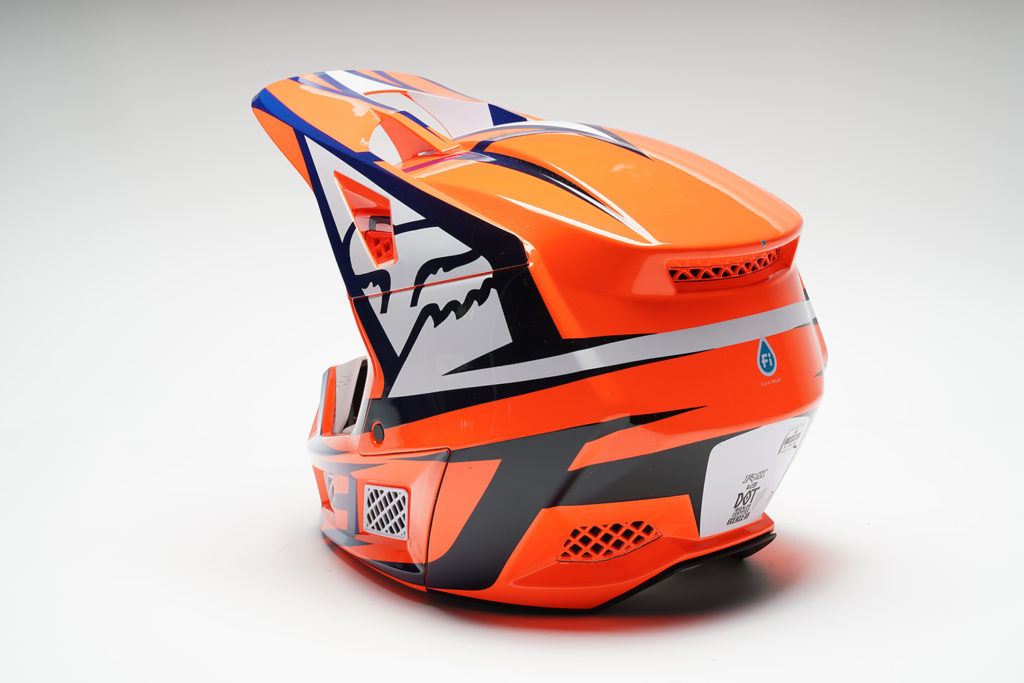 The fit of the new V3 helmet is deeper than it was in the previous V3, meaning that the chin bar is positioned further away from your face. Still, peripheral vision is excellent thanks to the generous eye-port, and this also allows every goggle we’ve tested to fit nicely inside. Venting is plentiful on the V3, and a ton of air finds its way through the mesh-covered openings and to your head. In fact, on cold days it can seem like too much!
The fit of the new V3 helmet is deeper than it was in the previous V3, meaning that the chin bar is positioned further away from your face. Still, peripheral vision is excellent thanks to the generous eye-port, and this also allows every goggle we’ve tested to fit nicely inside. Venting is plentiful on the V3, and a ton of air finds its way through the mesh-covered openings and to your head. In fact, on cold days it can seem like too much!
The V3 is worn by the entire GEICO Honda team, Adam Cianciarulo, Josh Hansen, and many more.
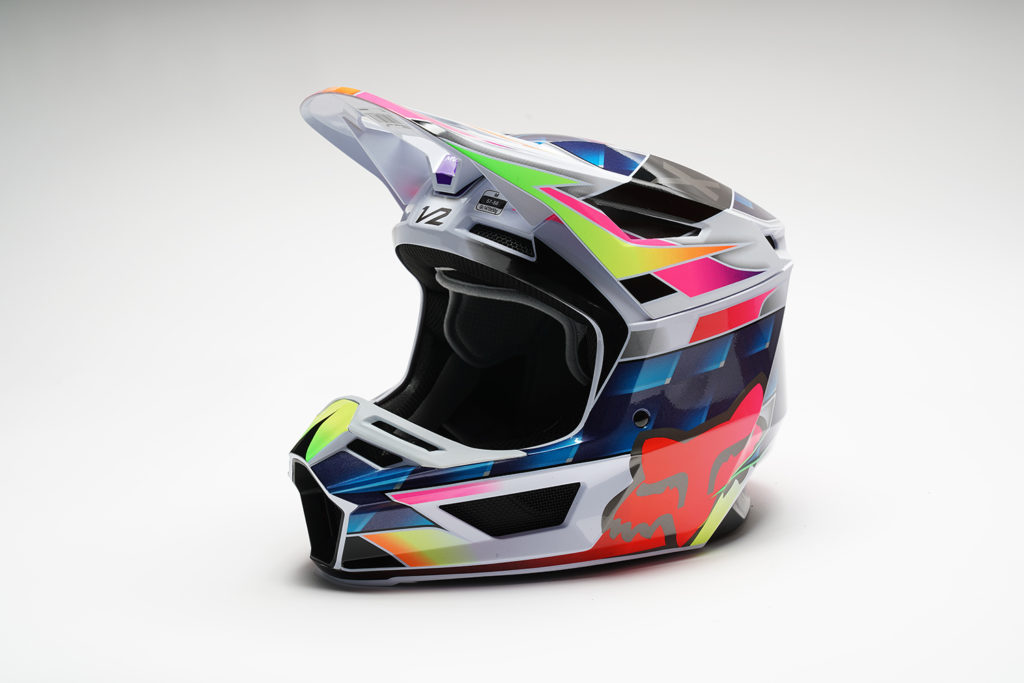
Fox Racing V2
Price: Starting at $249.95
The Fox Racing V2 is branded as its mid-level helmet, but it is regarded by many as a premium piece. The features it shares with the high-end V3 are greater than the differences between the two: the V2 boasts a Varizorb dual-density EPS liner, seven Fluid Inside rotational impact dispersion pods, generous venting, and the proprietary MVRS visor system. Differences? The V2 has a one-piece polycarbonate shell and a slightly different venting configuration.
Eagle-eyed race fans may have noticed that Team Honda HRC’s Ken Roczen chooses to wear the V2 helmet. Like the rest of the Fox Racing team, Roczen competed in the new V3 when it was first introduced, but during a visit to Fox’s Irvine, California, headquarters, he tried on a V2 out of curiosity and was taken aback by its comfort level. Every rider has a unique head shape and every helmet will fit each individual well…differently. Roczen soon thereafter switched to the Fox Racing V2 helmet, citing that the fit and feel of it was perfect for his liking.
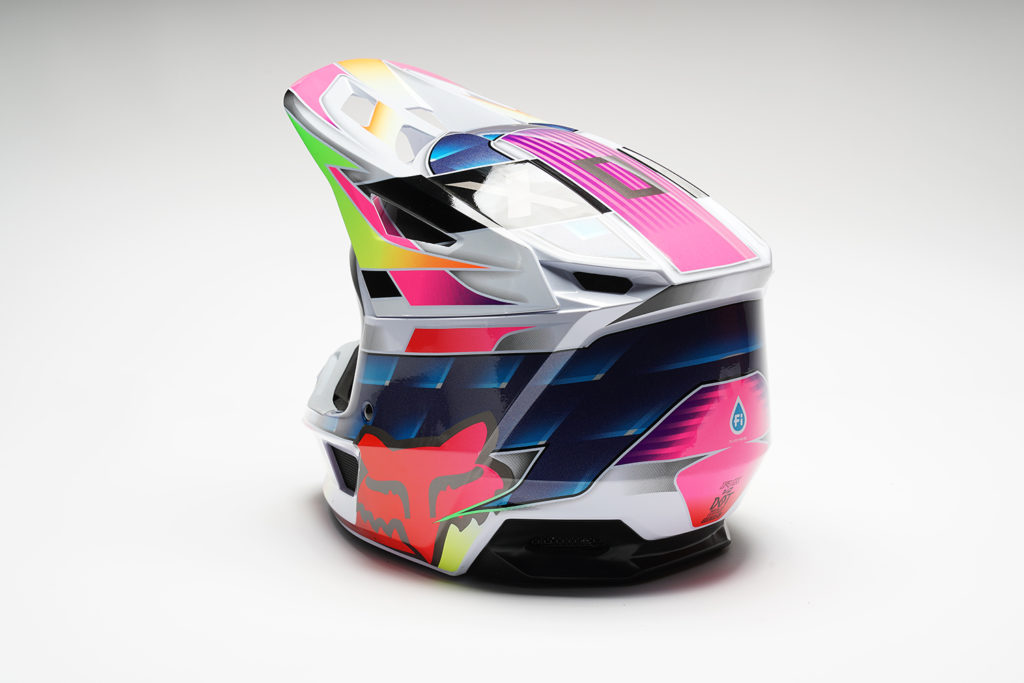 Having ridden in the V2, we can attest to the different feel that the helmet has from its more-expensive counterpart. In fact, during our recent 2020 250 Shootout our Senior Test Rider Pat Foster wore a new Fox Racing kit – including a V2 Vlar helmet – and didn’t notice until the end of the day that he was wearing Fox’s mid-level offering. “This thing is comfortable!” he said. “I would have never guessed from the fit, feel, and quality that it was not the V3.”
Having ridden in the V2, we can attest to the different feel that the helmet has from its more-expensive counterpart. In fact, during our recent 2020 250 Shootout our Senior Test Rider Pat Foster wore a new Fox Racing kit – including a V2 Vlar helmet – and didn’t notice until the end of the day that he was wearing Fox’s mid-level offering. “This thing is comfortable!” he said. “I would have never guessed from the fit, feel, and quality that it was not the V3.”
In our 2020 450 Shootout, tester Kyle Puerner had similar feedback about the V2 Kresa helmet he was given to complement his Flexair kit. “This thing is super comfortable and light,” he said. “I can’t believe how good helmets are these days.”
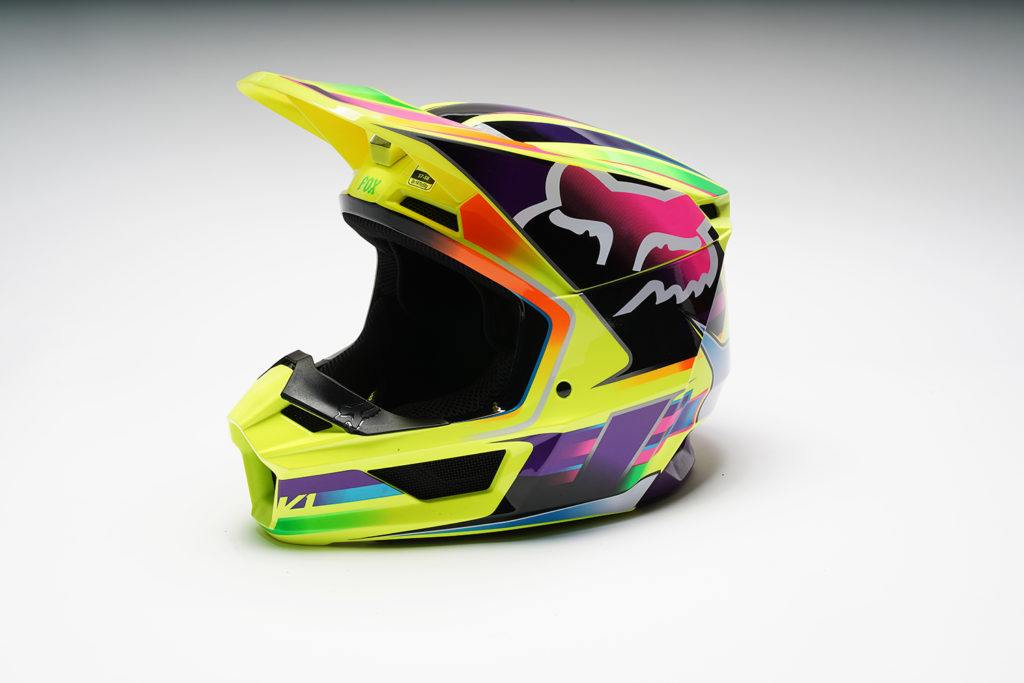
Fox Racing V1
Price: Starting at $179.95
The entry level V1 helmet is packed with great features. Featuring a one-piece polycarbonate shell, the MVRS visor system, 11 intake, and four exhaust vents, and a removable and washable liner. In reality, the V1 is considered an entry level helmet today, it is actually a more-advanced helmet than the old RC Replica helmet showcased above!
The Swapmoto Live staff – and TransWorld Motocross before that – take a pretty aggressive stance on helmets and always advise our readers to invest in the highest-quality helmet possible. Motocross is a dangerous sport, and investing over $1000 in a high-performance exhaust system and then opting for a $100 helmet with sweet graphics is ludicrous.
In the instance of the Fox V1, however, the technology and quality of construction are not lacking, per se…it is only the most modern safety features that address rotational impacts that are not included. Basically – as we said before – the current V1 is equivalent to a premium helmet from not-so long ago.
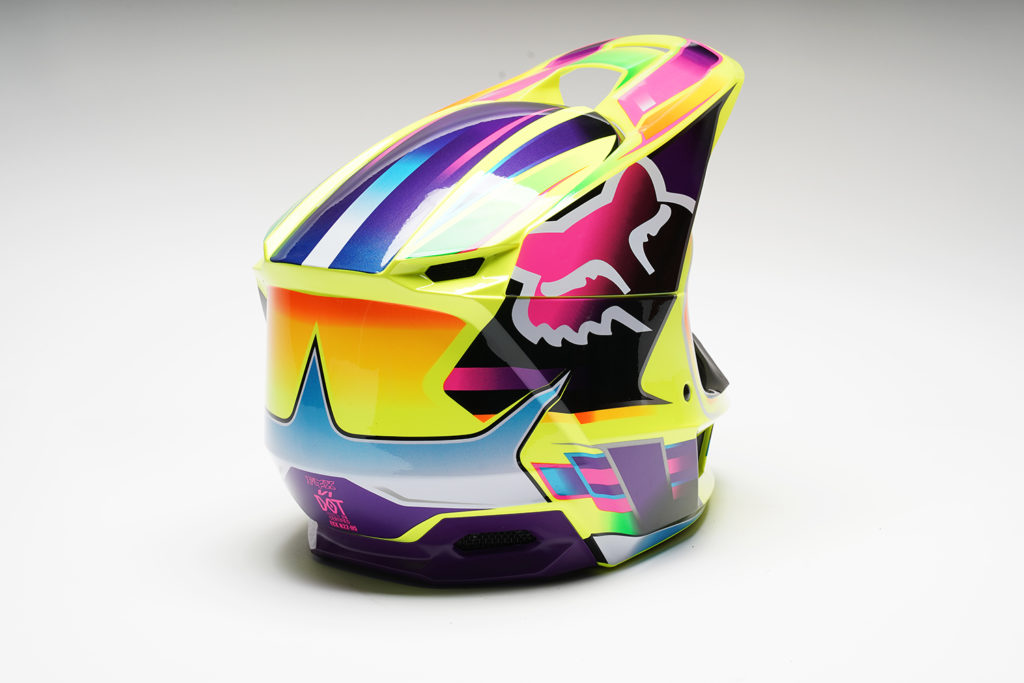
During a recent visit ride with one of our contacts at Fox Racing, we were surprised to see that he chooses to ride in the new V1, rather than the V2 or V3 helmets, even though he could obviously obtain one with ease. “I just like the fit best,” he said. “I’ve seen the testing data, and the V1 is plenty safe. I’m not racing and going all out.”
CLICK HERE to learn more about the wide selection of off-road helmets from Fox Racing!
















